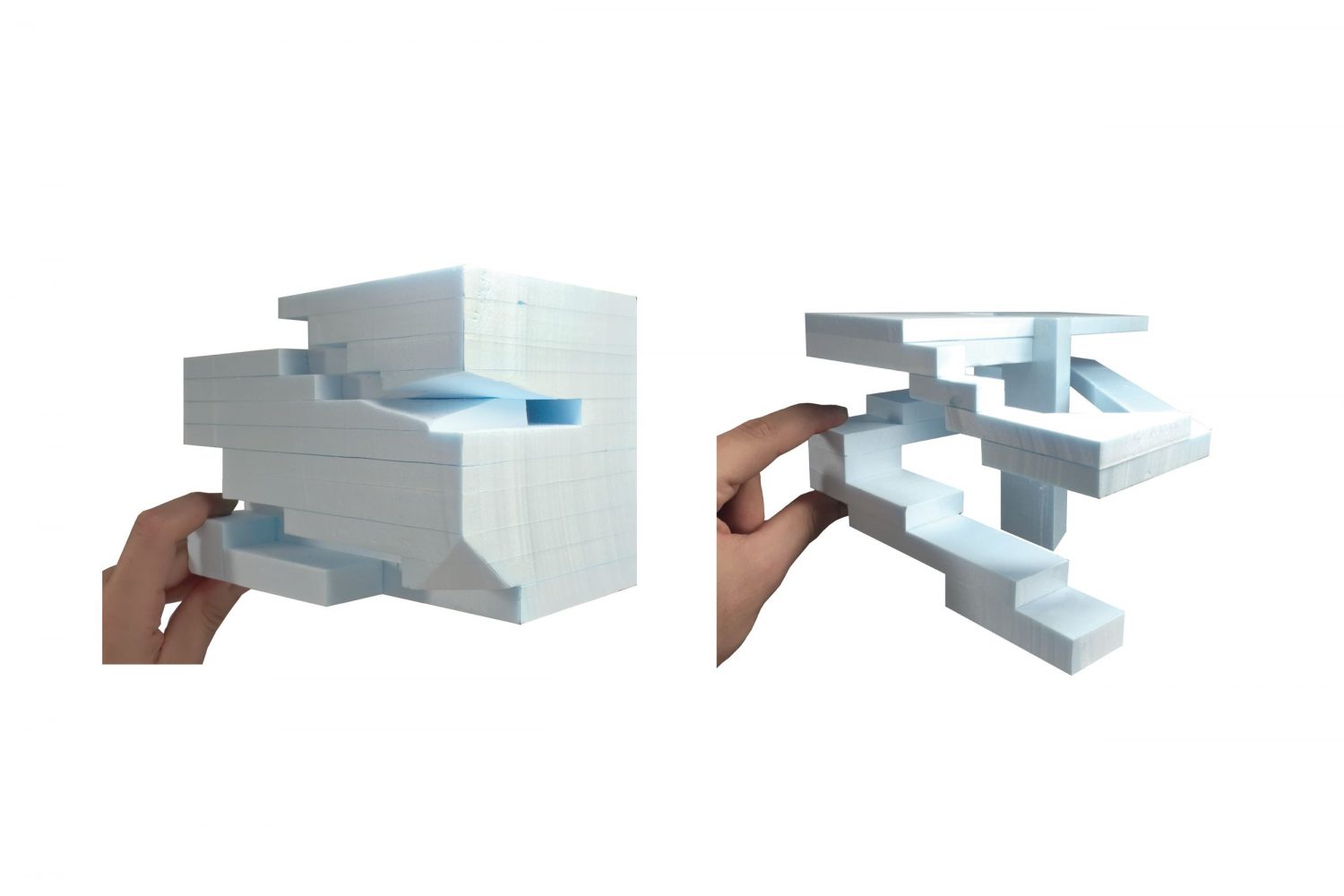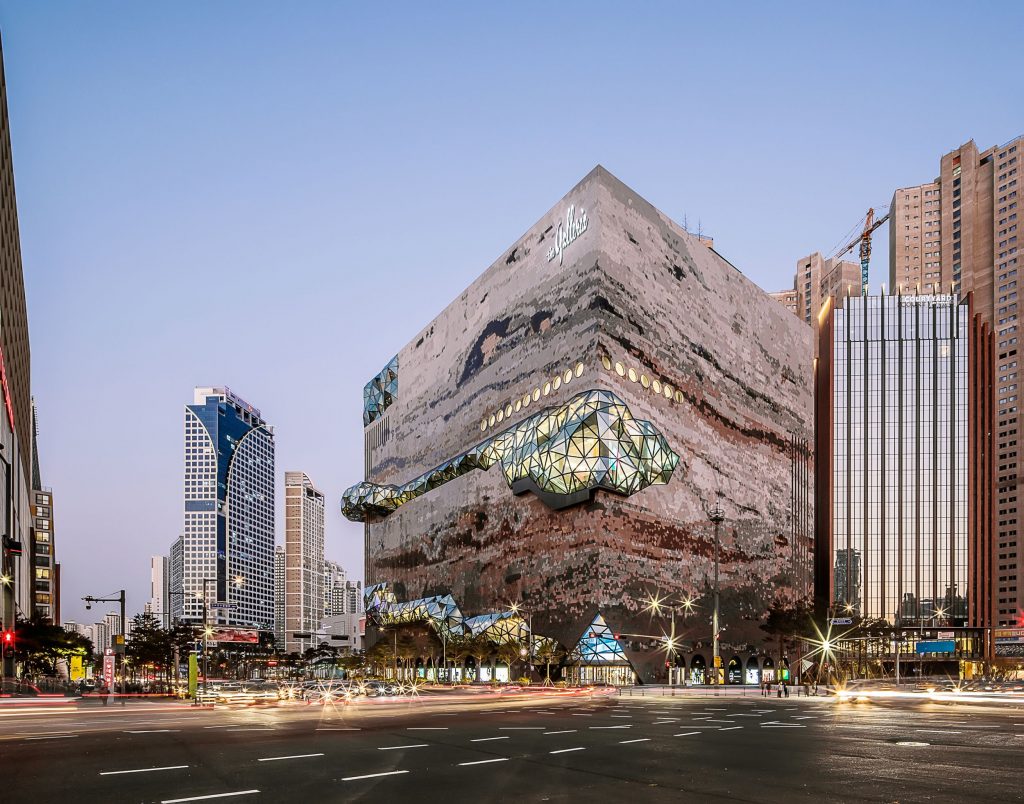THIS RECENTLY COMPLETED PROJECT OF OMA IN KOREA’S GWANGGYO, A NEW CITY TO THE SOUTH OF SEOUL, ILLUSTRATES HOW THE COLLISION BETWEEN RETAIL SPACES AND CULTURAL ACTIVITIES CAN USHER IN A FRESH WAY OF MAKING DEPARTMENT STORE
TEXT: PAPHOP KERDSUP
PHOTO: HONG SUNG JUN EXCEPT AS NOTED
(For Thai, press here)
At first glance, many would wonder what exactly this OMA’s latest project in Gwanggyo, 25 kilometers south of the South Korean capital, is. This seemingly almost windowless cubic building which may look similar to a large piece of rock is neither a sculpture by a famous artist nor a new museum. Actually, it’s a new, and the biggest, outlet of Galleria, Korea’s first and largest upscale department store franchise, that opened last month.
Gwanggyo is a new 11-square-kilometer town the development of which started in 2005 and finished last year by the Gyeonggi Urban Innovation Corporation (GICO). Viewing this freshness as a major asset, the OMA architects, led by Chris van Duijn, have created the young town’s natural point of gravity and center of public activities right downtown.
Courtesy of OMAThe form of the building, like that of a large piece of rock, adorned with triangular mosaics in beige, brown and other earth-tone colors on the facade making them look like layers of earth is not only for the sake of visual attractiveness. Also, the architects view this Galleria as the town’s “foundation stone”, providing some physical “permanence” to this budding town full of “temporariness”.
To make sure that the opacity of the stone is not shunning people away, against the designers’ and developers’ intention, OMA has designed an organic-shaped glass corridor starting from inside the ground floor then circling the higher floors all the way to the rooftop garden. Apart from decreasing the denseness of the building, this walkway seamlessly connects all the activities inside the store.
Also special is the design for the retails to be on the first to eighth floors, F&B outlets on ninth, a cineplex on 10th and 11th, and a knowledge zone, called “Academy” by the architects, and a park on 12th. This combination of, if not collision between, retail and cultural activities is noteworthy and makes the mall experience less tedious and predictable.
Such mix, though, may not be completely innovative: Thai department stores have long put together zoos, water parks and even museums. Still, if we consider the fact that this Galleria will soon become Gwanggyo’s town center accommodating its people’s many kinds of activities, the comprehensiveness and the variety of programs designed by OMA is indeed a perfect fit.






